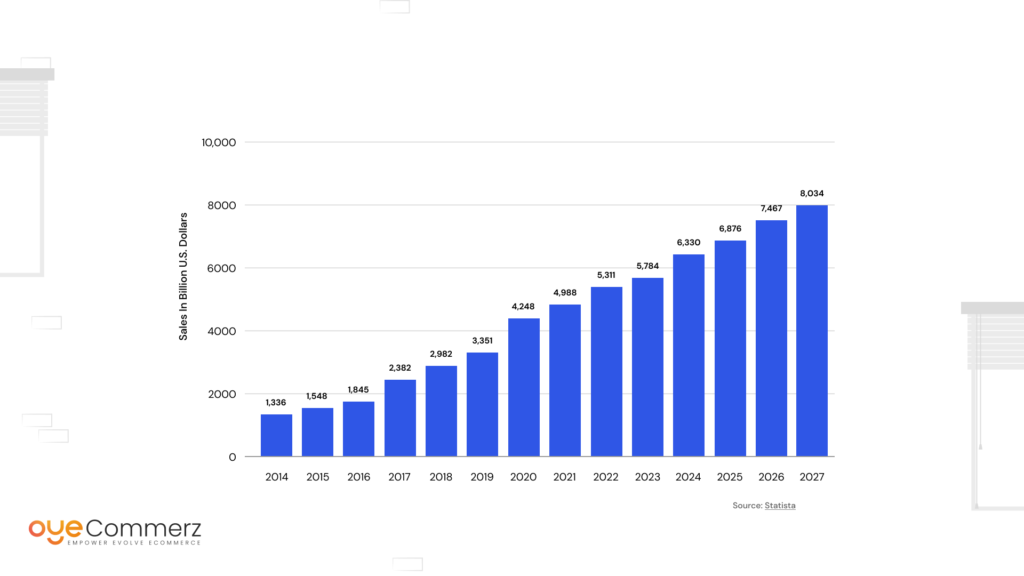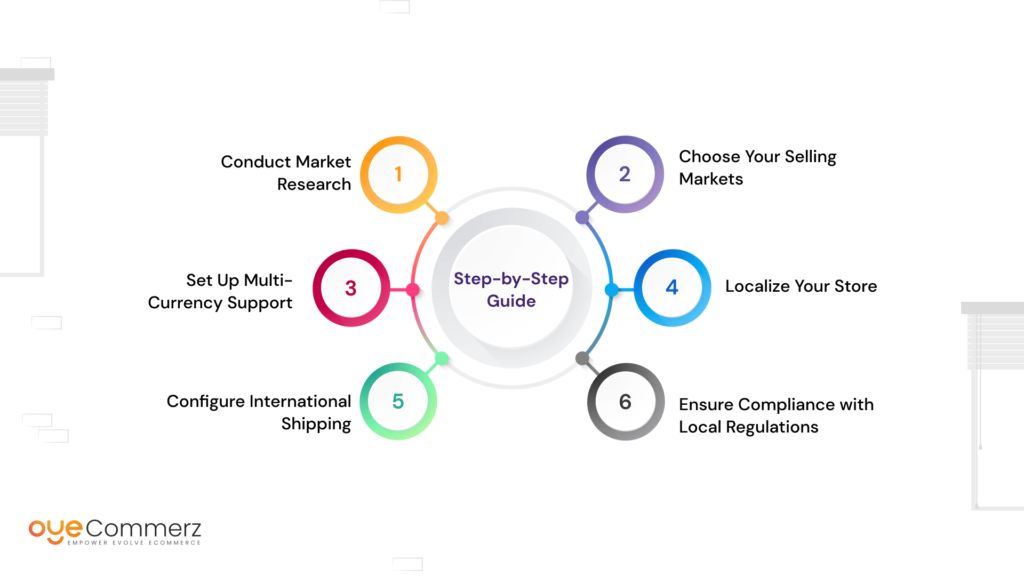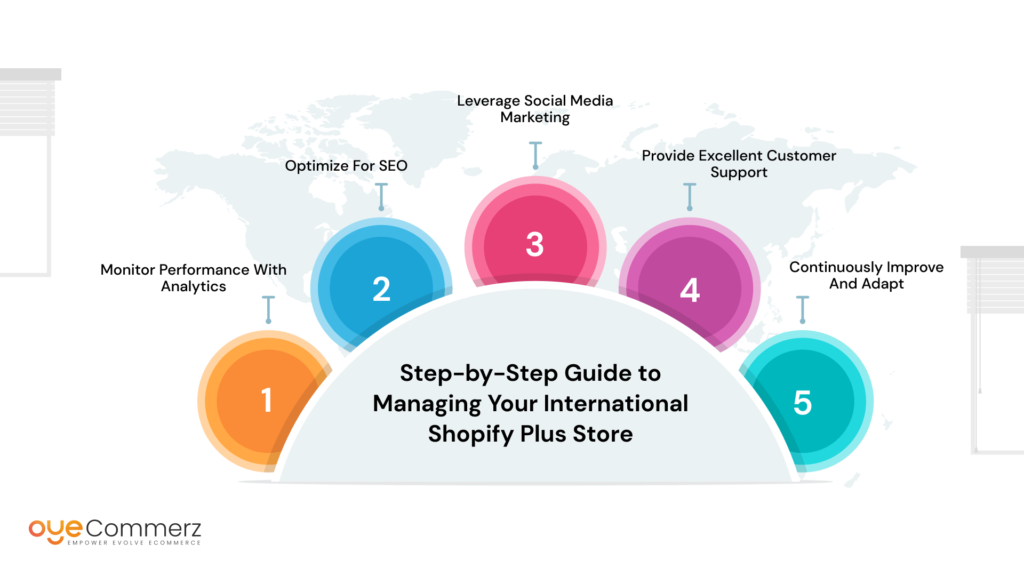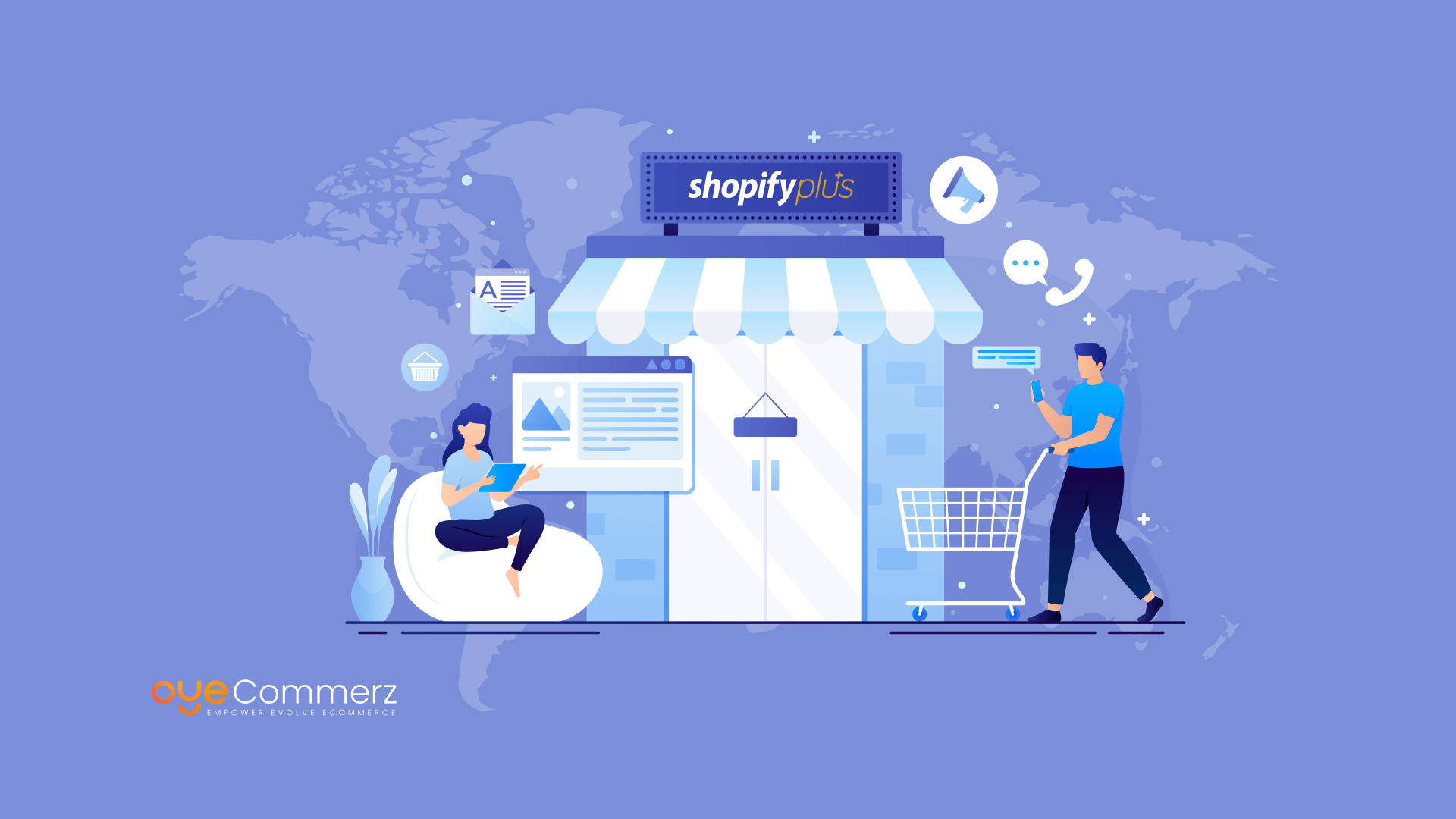Expanding your business internationally is crucial for achieving exponential growth. Shopify Plus for International E-Commerce simplifies this process with its robust, scalable platform designed for high-growth, high-volume merchants. To ensure a smooth transition, consider working with Shopify Plus store setup experts. This guide will walk you through the comprehensive steps of setting up and managing an international Shopify Plus store, with insights from experts to help you effectively capitalize on global markets.
Table of Contents
ToggleIntroduction
Taking your e-commerce business international is both an exciting and daunting endeavour. It’s about more than just selling products overseas; it’s about understanding and catering to diverse markets, navigating different regulations, and delivering a seamless shopping experience across borders.
Shopify Plus, the enterprise-level solution from Shopify, offers the tools and flexibility needed to conquer these challenges. This guide delves into the intricacies of setting up and managing an international Shopify Plus store, providing you with a detailed roadmap to global success.
Understanding the Global E-commerce Landscape
Before diving into the setup process, it’s crucial to understand the global e-commerce landscape. According to Statista, global e-commerce sales are projected to reach $6.38 trillion by 2024. This staggering growth highlights the immense potential for businesses willing to expand internationally. However, tapping into this market requires a strategic approach, starting with choosing the right platform.

Why Choose Shopify Plus for International Expansion?
Shopify Plus is tailored for businesses looking to scale quickly and efficiently. Its features include:
- Multi-Currency Support: Automatically display prices in local currencies, enhancing the shopping experience for international customers.
- Localized Content: Create region-specific content to cater to different markets effectively.
- Scalability: Handle large volumes of traffic and transactions seamlessly.
- Global Network: Leverage Shopify’s global network of servers to ensure fast load times worldwide.
These features, combined with Shopify Plus’s robust infrastructure, make it an ideal choice for international e-commerce.
Step-by-Step Guide to Setting Up Your International Shopify Plus Store

1. Conduct Market Research
Understanding your target markets is the foundation of international success. Start by identifying countries with high demand for your products. Utilize tools like Google Market Finder and Shopify’s own analytics to gain insights into potential markets.
Key Considerations:
- Cultural Differences: Tailor your products and marketing strategies to fit local cultures and preferences.
- Competitor Analysis: Study local competitors to understand pricing, marketing tactics, and customer preferences.
2. Choose Your Selling Markets
Select the countries you want to sell in based on your market research. Prioritize markets with high demand and low competition. Consider starting with a few key markets and expanding as you gain experience.
3. Set Up Multi-Currency Support
Shopify Plus allows you to display prices in multiple currencies. This feature is crucial for providing a localized shopping experience. To set this up:
- Go to your Shopify Plus admin panel.
- Navigate to Settings > Payments.
- Enable multi-currency support and configure the currencies you want to accept.
Ensure you regularly update exchange rates to reflect current market conditions accurately.
4. Localize Your Store
Localization goes beyond language translation. It involves adapting your content, products, and marketing strategies to suit local tastes and preferences.
Localization Steps:
- Language Translation: Use Shopify’s built-in translation tools or third-party apps like Weglot to translate your store content.
- Localized Content: Create region-specific landing pages, blog posts, and product descriptions.
Local Payment Methods: Offer popular local payment methods to build trust with customers.
5. Configure International Shipping
Shipping is a critical component of international e-commerce. Shopify Plus offers advanced shipping options to streamline this process.
Shipping Configuration:
- Carrier Integration: Integrate with global carriers like DHL, FedEx, and UPS.
- Shipping Zones: Define shipping zones and rates based on destination countries.
- Duties and Taxes: Use Shopify’s duties and taxes feature to calculate import taxes and display them at checkout.
6. Ensure Compliance with Local Regulations
Different countries have varying regulations regarding e-commerce. Ensure your business complies with local laws, including data protection, consumer rights, and taxation.
Compliance Checklist:
- Privacy Policies: Update your privacy policies to comply with local data protection laws (e.g., GDPR in Europe).
- Product Regulations: Verify that your products meet local safety and compliance standards.
Tax Compliance: Register for local taxes and ensure you charge the correct amount of VAT or sales tax.
Know More : Best Shopify Plus Apps for E-commerce Success
Step-by-Step Guide to Managing Your International Shopify Plus Store

1. Monitor Performance with Analytics
Use Shopify’s advanced analytics tools to monitor your store’s performance in different markets. Track key metrics like conversion rates, average order value, and customer acquisition costs.
Analytics Tips:
- Custom Reports: Create custom reports for each market to gain deeper insights.
- Google Analytics: Integrate Google Analytics for more comprehensive data analysis.
2. Optimize for SEO
Search engine optimization (SEO) is vital for attracting organic traffic. Implement international SEO strategies to improve your visibility in different regions.
SEO Strategies:
- Hreflang Tags: Use hreflang tags to indicate language and regional targeting to search engines.
- Localized Keywords: Conduct keyword research for each target market and optimize your content accordingly.
- Backlink Building: Build backlinks from local websites to boost your search engine rankings.
3. Leverage Social Media Marketing
Social media is a powerful tool for reaching international audiences. Develop region-specific social media strategies to engage with customers.
Social Media Tips:
- Localized Content: Post content in the local language and tailor it to cultural preferences.
- Influencer Partnerships: Collaborate with local influencers to increase brand awareness.
- Ad Campaigns: Run targeted ad campaigns on platforms like Facebook, Instagram, and TikTok.
4. Provide Excellent Customer Support
Customer support is crucial for building trust and loyalty. Offer multi-language support to cater to international customers.
Support Strategies:
- Live Chat: Use live chat tools like Tidio to provide instant support.
- Help Center: Create a comprehensive help centre with FAQs and guides in multiple languages.
- Local Phone Numbers: Provide local phone numbers for customer support to enhance credibility.
5. Continuously Improve and Adapt
The global market is dynamic and constantly evolving. Regularly review your strategies and adapt to changing trends and customer preferences.
Improvement Tips:
- Customer Feedback: Collect feedback from international customers to identify areas for improvement.
- Market Trends: Stay updated with global e-commerce trends and adjust your strategies accordingly.
- A/B Testing: Conduct A/B tests to optimize your website and marketing campaigns.
Transform Your Business with Shopify Plus Development
Boost your online presence, optimize your operations, and enhance user experiences with our robust solutions. Partner with OyeCommerz to unlock exceptional eCommerce opportunities and elevate your business. Contact us today to start your journey toward lasting success!
Contact to Migrate your Site to Shopify Now
Conclusion
Setting up and managing an international Shopify Plus store is a multifaceted process that requires careful planning, execution, and continuous improvement. By leveraging Shopify Plus’s powerful features and following the strategies outlined in this guide, you can successfully navigate the complexities of global e-commerce and unlock new growth opportunities.
Remember, the key to international success lies in understanding your markets, localizing your efforts, and providing an exceptional customer experience. With the right approach, your Shopify Plus store can become a global powerhouse, reaching customers around the world and driving sustainable growth.




